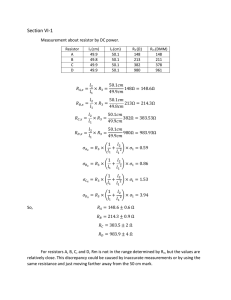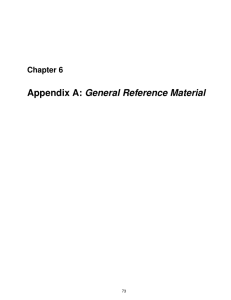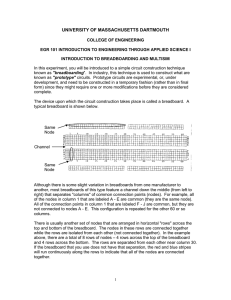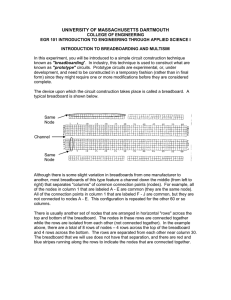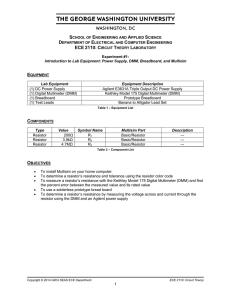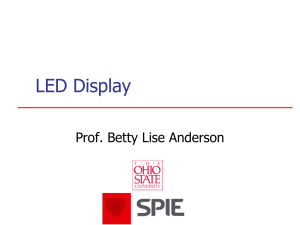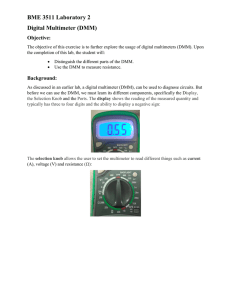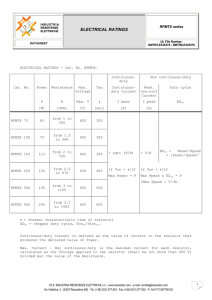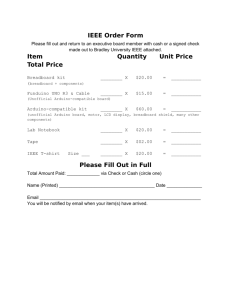Formal Lab Report Template
advertisement
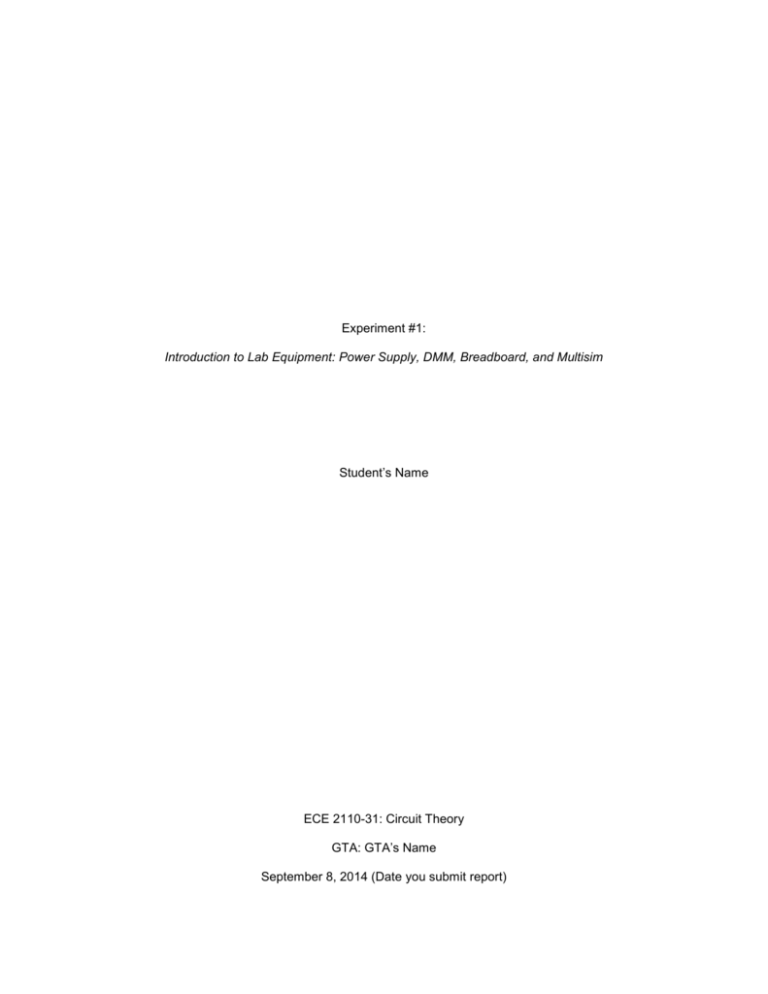
Experiment #1: Introduction to Lab Equipment: Power Supply, DMM, Breadboard, and Multisim Student’s Name ECE 2110-31: Circuit Theory GTA: GTA’s Name September 8, 2014 (Date you submit report) 1. Introduction The purpose of this experiment was… <do not simply copy the objectives from the lab manual, put them in your own words> <should only be a few sentences long> <remember everything in this report is past tense> <no “I’s” or “We’s” in a lab report, replace them with “this student” and “our group”> 2. Background Information <Provide background theory> <Provide any formulas you may use in this section> PE NV MV NV *100 Equation 2.1 – Percentage Error (PE) Equation, Nominal Value (NV), Measured Value (MV) <Notice how we # things, Equation 2.1 since it is Section 2 and it’s the 1st equation> <Include any relevant circuit diagrams (Multisim) that you can refer back to> 3. Methods and Materials <simple bullet list or table of the equipment you used> <do not just copy from lab manual, update with anything lab manual missed> Equipment Agilent E3631A Triple Output DC Power Supply Keithley Multimeter - Model 175 Breadboard … Components (Quantity and Type) (1) 9.1 Ω Resistor (1) 200 Ω Resistor (1) 3.9 kΩ Resistor … Table 3.1 – Equipment and Components List OR Equipment: (1) Agilent E3631A Triple Output DC Power Supply (1) Keithley Model 175 Digital Multimeter (DMM) (1) Pair of Banana to alligator test leads Components: (1) 200Ω Resistor (1) 3.9KΩ Resistor (1) 4.7MΩ Resistor Experiment #1 Student’s Name Page 2 of 4 4. Experimental Procedures 4.1 Prelab 4.2 Resistance Measurement 4.3 Solderless Prototype Breadboard 4.4 Resistance Determination Using Voltage and Current … <break this into the sub-sections from the lab manual> <don’t copy paste every step from the lab manual, paraphrase the important portions in a paragraph structure> <this should be a few sentences for each section in the lab manual, but thorough enough to properly explain your lab procedure> 5. Measurements and Results <show all measurements and calculations in this section (a sample calculation for each field in a table will suffice, no need to show percent error calculation 10 times, etc.)> <show any and all simulation results, oscilloscope screenshots, tables of data, etc.> <# all tables and graphs, make certain to have units and axis labels> <do not interpret your results in this section, that is for the next section> 6. Analysis and Discussion <Explain, analyze, and interpret> <Explain your results in terms of the theoretical background you provided in section 2> <Analyze the differences between hand calculations, simulations, and measurements, using % error> <Interpret, what is the significance of the results? Why do we have a large % error?> 7. Conclusion <very short section in undergraduate work, no more than 2 paragraphs> <After you present your conclusion, provide a short justification. The percentage of error is the result that helps us draw this conclusion. This makes a sound and sufficient conclusion. Generally, this is enough; however, the conclusion might also be a place to discuss weaknesses of experimental design, what future work needs to be done to extend your conclusions, or what the implications of your conclusion are.> Experiment #1 Student’s Name Page 3 of 4 8. References [1] GWU SEAS ECE Department. "Experiment #1: Introduction to Lab Equipment: Power Supply, DMM, Breadboard, and Multisim." The ECE 2110 Course Website, Fall 2014. http://www.seas.gwu.edu/~ece11/fall14/labs/labs/ECE_2110_Experiment_1.pdf [2] Thomas, Roland E., Albert J. Rosa, and Gregory J. Toussaint. The Analysis and Design of Linear Circuits. 7th ed. Hoboken, NJ: Wiley, 2012. 9. Appendices <optional, if you have large amounts of raw data, calculations, graphs pictures or tables that have not been included in the report itself for the purpose of clarity in your report.> <refer to your appendix from the previous sections as follows: "Relevant sections of the resistor’s Data Sheet are contained in Appendix A."> Experiment #1 Student’s Name Page 4 of 4
